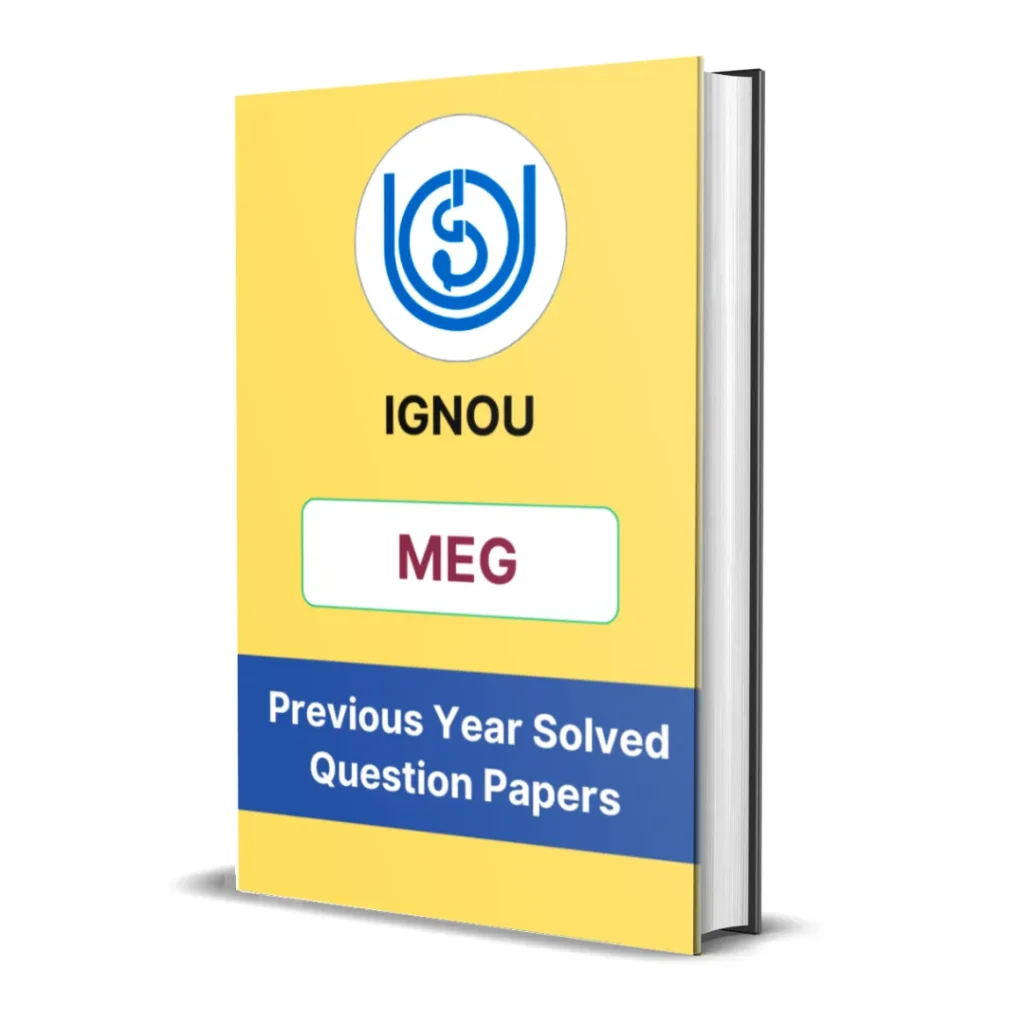MEG-04 Block 1 Summary | What is Language?
- Last Updated On August 13, 2025
Table of Contents
Here you will get the detailed summary of IGNOU MEG 4 Block 1 – Aspects of Language.
We have provided the summary of all units starting from unit 1 to unit 4.

Introduction
Block 1 of the IGNOU MEG-4 course titled What is Language? provides a foundational understanding of language as a system of human communication. The block introduces students to the nature and structure of language, different approaches to analyzing linguistic data, and the deep relationship between language and thought. By grounding learners in key theoretical and analytical tools, this block prepares them for more advanced discussions in linguistics and language studies.

Unit 1 – The Nature of Language
This unit introduces the fundamental characteristics of language and sets the stage for linguistic inquiry.
Key concepts include:
-
Language as a system of communication that is uniquely human and structured.
-
Language is:
-
Arbitrary – The connection between a word and its meaning is not natural (e.g., there’s no inherent reason why a “tree” is called a “tree”).
-
Conventional – It works because of social agreement.
-
Systematic – Language has structure, with phonology, morphology, syntax, and semantics.
-
Creative/productive – Humans can produce an infinite number of sentences.
-
Dynamic – Languages evolve over time.
-
The unit also touches upon:
-
Differences between human language and animal communication
-
Descriptive vs. prescriptive approaches to language – where linguistics focuses on describing how language is used, not how it “should” be used.
This unit encourages students to think of language not just as a tool but as a complex, rule-governed, and evolving system embedded in culture and cognition.

Unit 2 – Looking at Data-I
This unit introduces the process of linguistic data analysis, focusing on phonological and morphological structures.
Topics include:
-
Phonetics vs. Phonology:
-
Phonetics: Study of physical sounds (how they are produced and heard).
-
Phonology: Study of how sounds function in a particular language system.
-
-
Phonemes and allophones: Basic units of sound and their context-based variations.
-
Morphology:
-
Morphemes: The smallest units of meaning in language (e.g., “un-”, “happy”, “-ness”).
-
Difference between free morphemes (stand-alone words) and bound morphemes (prefixes/suffixes).
-
Through simple examples from English and other languages, the unit teaches how linguists extract patterns and rules from language data.
Unit 3 – Looking at Data-II
Building upon the previous unit, this section focuses on syntax and semantics—how words combine to form phrases and how meaning is constructed.
Key areas discussed:
-
Syntax:
-
Sentence structure and grammatical rules.
-
Concepts like phrase structure rules, constituents, and word order.
-
Grammatical categories such as noun phrases (NP), verb phrases (VP), etc.
-
-
Semantics:
-
The study of meaning at the word and sentence level.
-
Concepts of denotation (literal meaning) and connotation (implied meaning).
-
Distinction between sense and reference, and between literal and figurative language.
-
The unit also introduces tools for data-based analysis, such as:
-
Sentence trees
-
Substitution tests
-
Ambiguity detection (lexical and structural)
This unit emphasizes the scientific approach to language—breaking it down into components that can be systematically analyzed.

Unit 4 – Language and Thought
This final unit explores the profound and debated relationship between language and cognition—how language shapes, reflects, or is influenced by thought.
Key theories discussed:
-
Sapir-Whorf Hypothesis:
-
Linguistic determinism: Language determines thought.
-
Linguistic relativity: Language influences the way we perceive and categorize the world.
-
-
Examples include how different cultures describe time, color, and space differently based on their linguistic systems.
-
Chomskyan View: While languages vary, humans share an underlying universal grammar—pointing to an innate structure of thought independent of any one language.
The unit also addresses:
-
Cognitive linguistics – views language as an extension of human perception and categorization.
-
Metaphor and conceptual mapping – showing how abstract concepts are understood through language rooted in physical experience (e.g., “time is money”).
Ultimately, this unit challenges learners to consider whether language is a mirror of thought, a shaper of reality, or both.